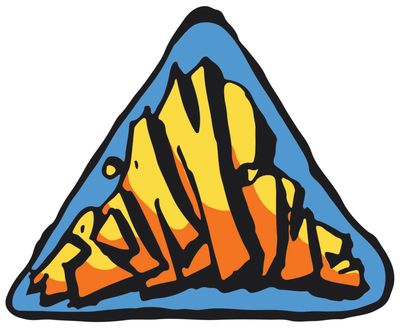Digital Collage

Combining traditional and digital methods
Students engage in a range of art units that consist of both traditional and digital methods, then they create a final artwork in a digital format of their choice, using any relevant traditional methods to support.
They need to include:
- artists they have found inspirational for their traditional and digital methods.
- experimentation and development of a portfolio exploring a variety of mediums and methods both digital and traditional.
- planning and development of a final artwork, including documentation of process.
- peer-to-peer feedback and self-reflection of learning
Examples of students digital artworks
Logo and Icon design

Following a design brief
Students adhered to the design brief to develop an original logo design for a company of their choosing, whether it be an existing enterprise or a fictional one. Additionally, students crafted personal logos that symbolized their own identities, employing the design process and integrating both traditional and digital techniques.
Using a specific design brief as their guiding framework, students meticulously followed each step of the design process to conceptualize and develop an original logo design.
This involved initial brainstorming sessions, sketching out ideas, and refining their concepts through multiple iterations. They considered various elements such as color schemes, typography, and symbolism to ensure their logo effectively communicated the intended message and brand identity.
Once they were satisfied with their final design, they used Adobe Illustrator, a powerful vector graphics software, to create a polished and professional digital copy of their design.
This allowed them to experiment with different effects, adjust details with precision, and produce a high-quality logo that could be used across various digital and print media.
Examples of students logo and icon designs
Digital Photography

Creating a nature or found objects sculpture
During COVID-19 I was asked to deliver art classes that students could complete at home while being in extended lockdown. Due to the fact students lacked art supplies in their home, I developed this digital photography unit that could easily be completed, while also getting students away from their devices, using their brains creatively.
For this unit:
- They researched digital photography methods and found inspirational photographers to share with the class.
- Then we explored the work of land based artists and found object artists who used materials they could find in their surrounding environment.
- Students catalogued the objects they had access to and then sketched, planned and executed a sculpture within a selected location in their home or outside.
- They took a series of digital photographs of their sculptures within the space.
- Then wrote an artist statement to accompany them before presenting through TEAMS for the rest of the class.
Once we returned to school this unit because an excursion outside of the classroom to a particular location where students needed to use what they found in that location to create a sculpture and the photograph it using photography principles. They did this working collaboratively in small groups and completed a gallery walk of each others creations.
Examples of students digital photography
Target Audience Mood board

Knowing your target audience
As part of the design process students need to know who they are designing for. It is beneficial to have a visual representation of that audience to return to as they move through the design process.
Students choose their target audience based off their design brief and then using photoshop or an equivalent package create a mood board that includes images and colours that represent their target audience.
Examples of target audience mood boards
Copyright © 2025 Lori Ruplal - All Rights Reserved.